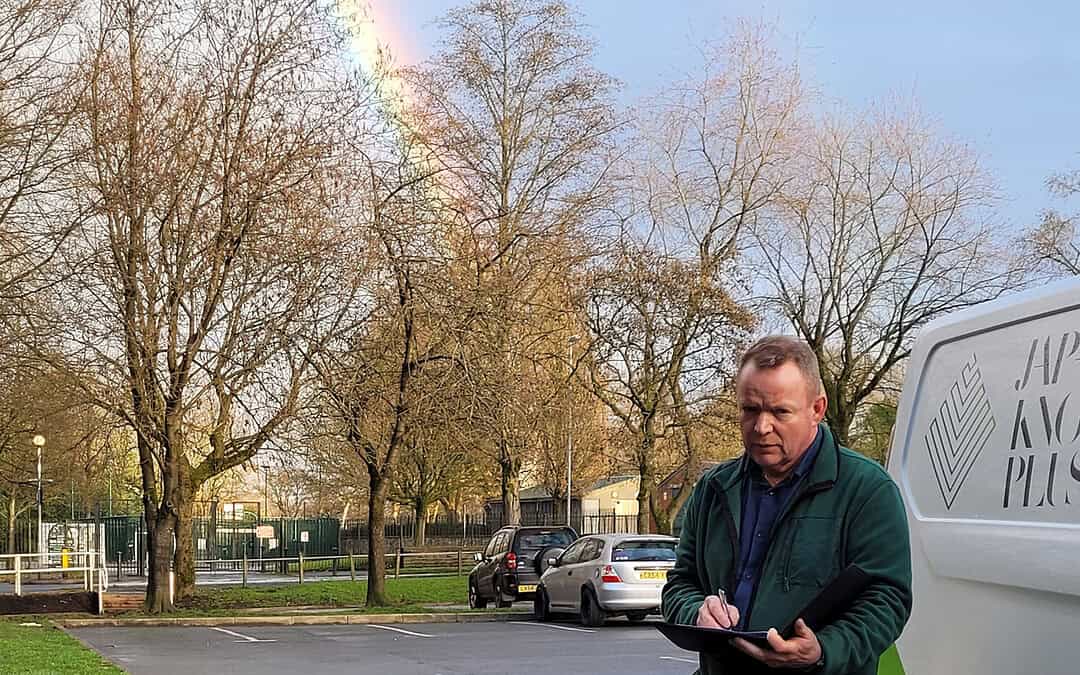Japanese Knotweed is a highly invasive species that can cause significant damage to your property.
Learn about the most effective long-term solutions for Japanese Knotweed management and how to prevent its spread.
Introduction: Japanese Knotweed (Fallopia japonica) is a highly invasive species that has become a major problem in many countries around the world. It was first introduced to the UK in the 19th century as an ornamental plant but has since spread rapidly, causing damage to buildings, roads, and other structures. Japanese Knotweed is difficult to control and can quickly take over large areas of land if left unchecked. In this article, we will discuss the most effective long-term solutions for Japanese Knotweed management.
- Identification of Japanese Knotweed
- Risks Associated with Japanese Knotweed
- Traditional Methods of Japanese Knotweed Control
- Long-Term Solutions for Japanese Knotweed Management
- Prevention of Japanese Knotweed
Identification of Japanese Knotweed :
Japanese Knotweed can be identified by its distinct bamboo-like stems, heart-shaped leaves, and small white flowers. It can grow up to 10cm per day and can reach a height of 3-4 meters. It is important to correctly identify Japanese Knotweed to avoid confusion with similar-looking plants.
Risks Associated with Japanese Knotweed
Japanese Knotweed can cause significant damage to buildings, roads, and other structures. Its root system can penetrate through concrete and can cause structural damage. It can also disrupt drainage systems and cause flooding. In addition, Japanese Knotweed can negatively impact biodiversity by outcompeting native plants.
Traditional Methods of Japanese Knotweed Control
Traditional methods of Japanese Knotweed control include herbicide treatment, excavation, and burial. While these methods can be effective in the short term, they are not always successful in eradicating the plant. In addition, they can be expensive and can cause significant disruption to the surrounding area.
Long-Term Solutions for Japanese Knotweed Management
The most effective long-term solutions for Japanese Knotweed management involve a combination of control methods. These methods include:
- Herbicide treatment: The use of specialist herbicides can be highly effective in controlling Japanese Knotweed. However, this method needs to be carried out over a number of years to be effective.
- Biological control: The use of biological control agents, such as insects and fungi, can be effective in controlling Japanese Knotweed. However, this method can take a long time to be effective and may not be suitable for all situations.
- Stem injection: This involves injecting herbicide directly into the stem of the plant. This method can be highly effective in controlling Japanese Knotweed, but it requires specialist equipment and expertise.
- Soil screening: This involves removing the topsoil from an area infested with Japanese Knotweed and screening it to remove any fragments of the plant. This method can be highly effective in preventing the spread of Japanese Knotweed.
Prevention of Japanese Knotweed
Preventing the spread of Japanese Knotweed is key to its long-term management. Prevention measures include:
- Early detection: Early detection of Japanese Knotweed can prevent it from becoming established and spreading.
- Proper disposal: Japanese Knotweed must be disposed of properly to prevent its spread. It should never be dumped in the wild or in garden waste bins.
- Education: Education and awareness-raising can help prevent the accidental spread of Japanese Knotweed.
FAQs: Q: Can Japanese Knotweed be eradicated completely? A: While it can be difficult to completely eradicate Japanese Knotweed
Q: Is Japanese Knotweed harmful to humans? A: Japanese Knotweed is not harmful to humans, but it can cause damage to property and infrastructure.
Q: Can I remove Japanese Knotweed myself? A: It is not recommended to remove Japanese Knotweed yourself. It is best to seek the advice of a specialist in Japanese Knotweed control.
Q: How can I prevent the spread of Japanese Knotweed? A: You can prevent the spread of Japanese Knotweed by being vigilant, properly disposing of any plant material, and educating others about the risks of the plant.
In conclusion,
Japanese Knotweed is a highly invasive species that can cause significant damage to property and infrastructure. The most effective long-term solutions for Japanese Knotweed management involve a combination of control methods and prevention measures. It is important to correctly identify Japanese Knotweed, seek the advice of a specialist in Japanese Knotweed control, and take steps to prevent its spread. By working together, we can effectively manage the spread of Japanese Knotweed and protect our environment and communities.
